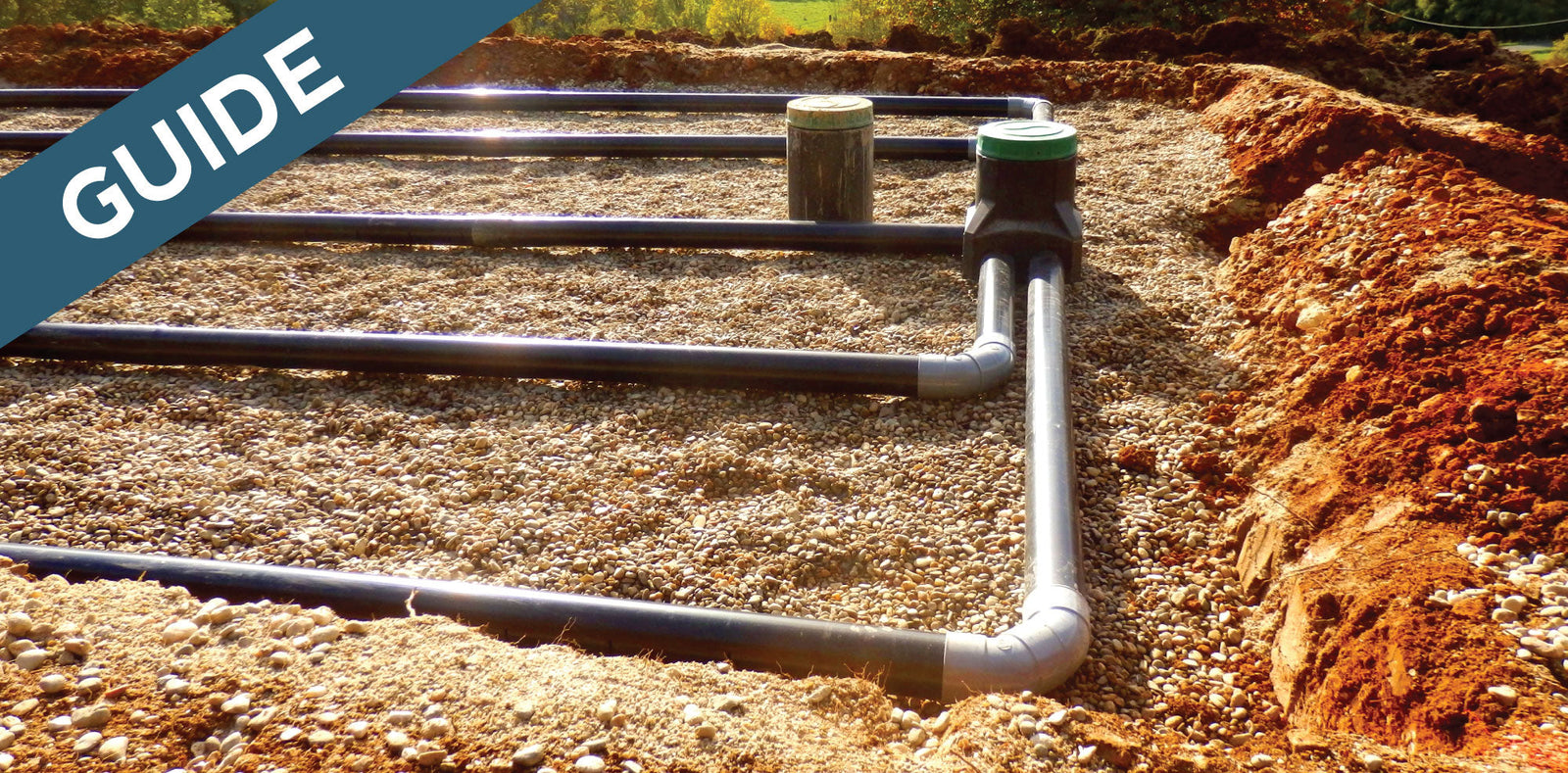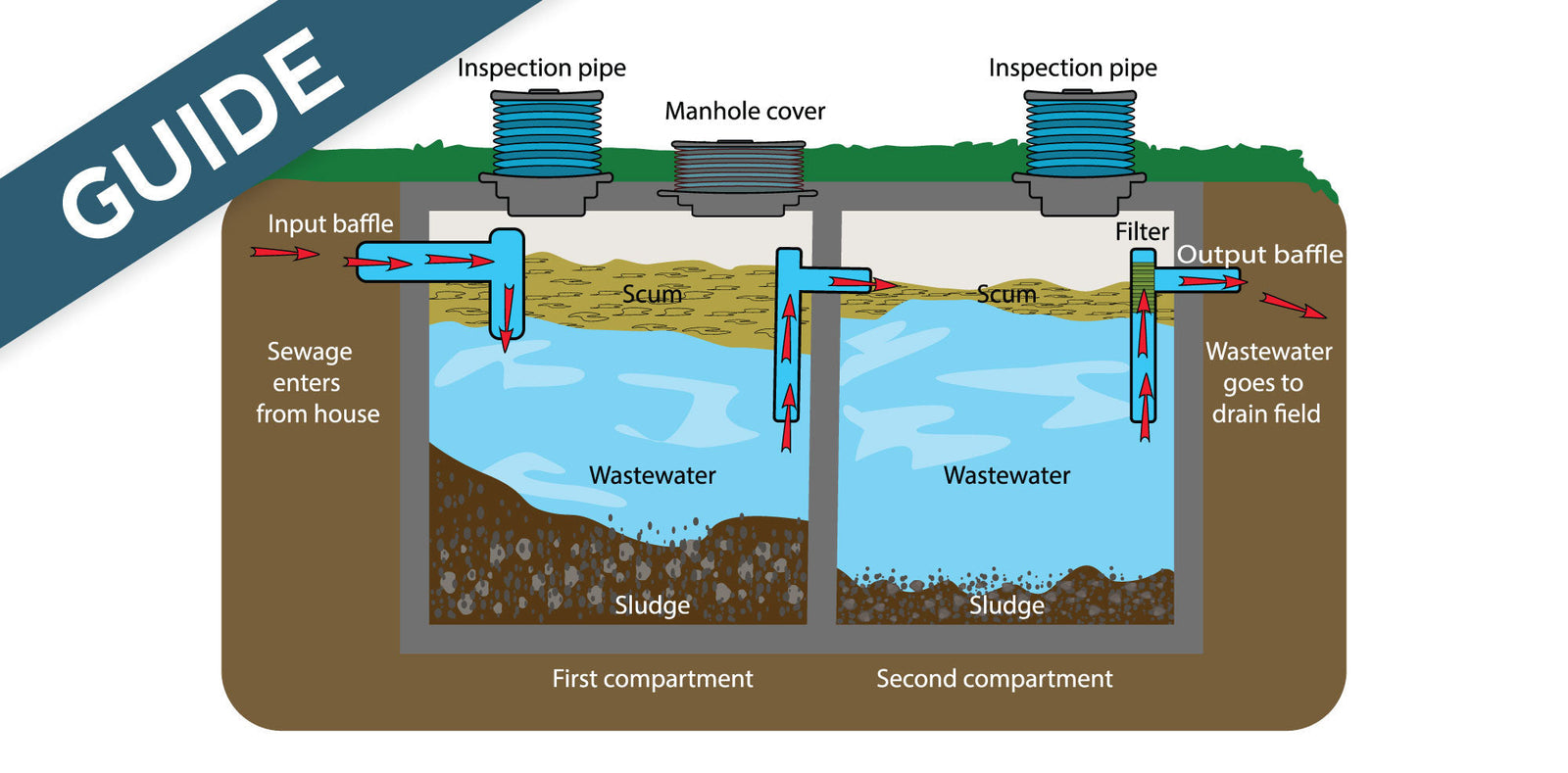KEY POINTS:
- The first step of seasonal septic system maintenance is to check the septic area—especially the leach field. You should make sure that there is no sewer smell or soggy soil over the septic area, as these signs can be indicative of larger issues. Also, make sure there are no cracks in the lid or tank.
- The second step of seasonal maintenance is to protect the leach field area. Make sure there are no heavy items on the leach field and no excessive plant growth.
- The third step of seasonal maintenance is to inspect your tank, have it inspected, and/or pump the tank if necessary. Some cities require you to have your system professionally inspected at least once a year.
- The fourth step of seasonal maintenance is performing a yearly deep clean of the system. Please see below for details about performing your deep clean!
Being a homeowner comes with a lot of challenges, not least of which is caring for one of the most important aspects of your home: the septic system. While many people are turned off from the idea of maintaining a septic system—often choosing instead to ignore it—properly caring for your septic system is probably one of the best actions you can take! And ignoring it can and often will lead to more hassle for you! Proper maintenance doesn’t take much; in fact, a yearly, seasonal deep clean will take care of most issues. In this article, we’ll take a detailed dive into our recommendations for seasonal septic system maintenance and performing a yearly septic system deep clean.
Let’s jump in!
The Four Steps of Seasonal Maintenance:
Checking the septic area—especially the leach field
We all know it’s true: things can change a whole lot in a year, and when it comes to your septic system, you’ll need to make sure you’re keeping up on general maintenance. When you first begin your seasonal maintenance, there are some checklist items to examine:
- Make sure there is no sewer smell around the septic area. A sewer smell will be the first indication of many issues, including a clogged system or a full septic tank.
- Make sure the soil is not soggy. Again, if the soil is soggy over the septic area, this could be indicative of other issues. In all likelihood, a strong sewer smell may go hand-in-hand with soggy soil.
- Make sure your tank is watertight. If the previous two points checked off as “okay,” then you should next make sure that your tank is watertight. Make sure there are no cracks in the lid or the tank.
As we’ll cover below, if any of the above points do not check off, then a professional inspection or professional repair may be needed. Additionally, having your tank professionally inspected can help you to determine if your tank does indeed have leaks.
Protecting the leach field area
The leach field is a particularly fragile component of your septic system. The lateral line system (i.e., the PVC pipes that extend out into your leach field) can be damaged by excessive plant roots, heavy items placed on or driven over the leach field, or excessive erosion. When performing your seasonal maintenance routine, check the following items:
- Ensure that there are no heavy items on your leach field. This is a very important point. As mentioned above, if heavy items are placed on your leach field, they can crack the PVC pipes that make up the lateral line system, which can lead to clogs and backups (no fun for you!). Additionally, you should make sure that it is difficult to drive cars or other heavy vehicles over the leach field. You may even consider identifying the boundaries of the leach field and constructing a fence around the perimeter.
- Clear away any excess plant growth. As we will see below, because the roots prevent erosion, some plant life is very beneficial on a leach field. However, if there is excessive plant life—particularly plants with more aggressive roots—these roots may damage the lateral line system. Be sure to clear away large bushes that have grown over the year and/or trees that are encroaching on your leach field.
- However, do not remove all plant life, as this may cause erosion. While you’ll want to clear away excess plant life, you should also ensure that beneficial plants thrive. Grass and other small plants will not damage your lateral line system and will help to prevent erosion.
Inspecting your tank + having your septic tank pumped
While you can perform a lot of yearly maintenance quite easily, some steps will require a bit more expense and/or elbow grease. Some cities require you to have your septic system inspected every year. Be sure to check with your local authorities to determine whether or not you must have your septic system inspected yearly.
Despite laws, however, we believe that it is probably a good idea to go ahead and have your system inspected (or inspect it yourself) yearly to assess if you need to have the system pumped or if there are any issues with the system.
If you’re more of a DIY type of person, please touch or click here to read our article about performing a septic system inspection yourself! (Please note: in cities where yearly septic system inspections are required, you may have to have your system inspected professionally. Again, please check with your local authorities.)
Treating Your Septic Field Yearly.
Now we come to (in our opinion) one of the important aspects of yearly maintenance: the septic system deep clean! If you’ve completed all of the previous steps, and everything has checked out, then you’re ready for your deep clean. We recommend that you treat your system with Unique’s Septic Field Rejuvenator once per year. Additionally, if you are experiencing any of the issues mentioned above, Septic Field Rejuvenator will quickly and easily restore your septic system.
This product contains the most advanced bacteria + enzyme formula on the market. The formula quickly and easily digests waste buildups! Not only will this product clear out waste buildup inside your septic tank, but it will also clean your lateral line system and reactivate septic field perking.
- To perform your deep clean, pour one bottle (32 ounces) of Septic Field Rejuvenator into your toilet and flush. Allow 48 – 72 hours for the product to deep clean your septic system.
- If you are dealing with an already-backed-up system, pour two bottles (64 ounces) of Septic Field Rejuvenator into your toilet and flush. Allow 72 hours for the product to completely rejuvenate your septic system!
Improperly Installed or Old Septic Systems
Even if you’ve diligently followed all the advice given above, there is always the off-chance that your septic system was improperly installed or you are dealing with an outdated system. While this is unlikely, it may help to explain consistent issues that were not fixed by following the other guidelines given above. If you find yourself in this situation, please touch or click here to read our article about the different types of septic systems and here to read our article about the cost of installing a new septic system.
Conclusion
If you’re a homeowner, you have the great responsibility to properly care for your septic system! Indeed, your actions as a diligent homeowner will help prevent future problems in your septic system, allowing you to avoid plenty of pricy repairs and stress. As always, we would love to chat with you if you have any further questions, concerns, or comments, so please feel free to reach out to us at support@uniquemm.com!





